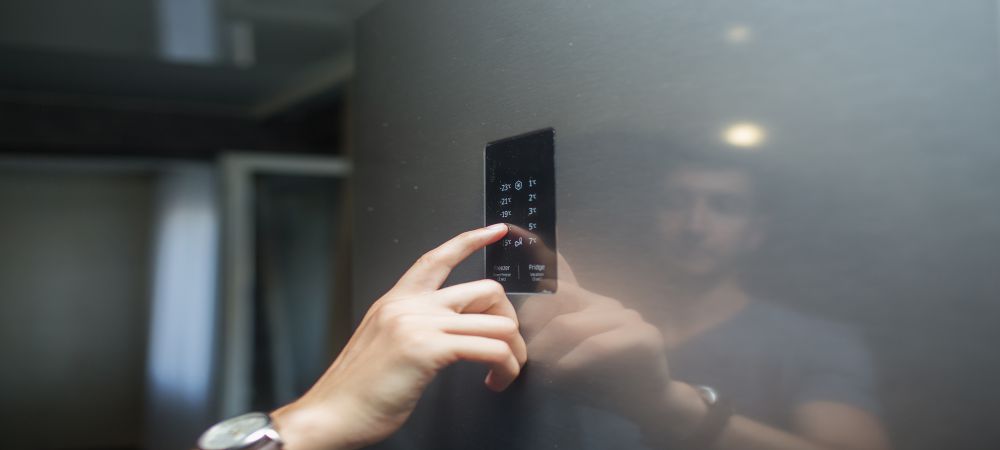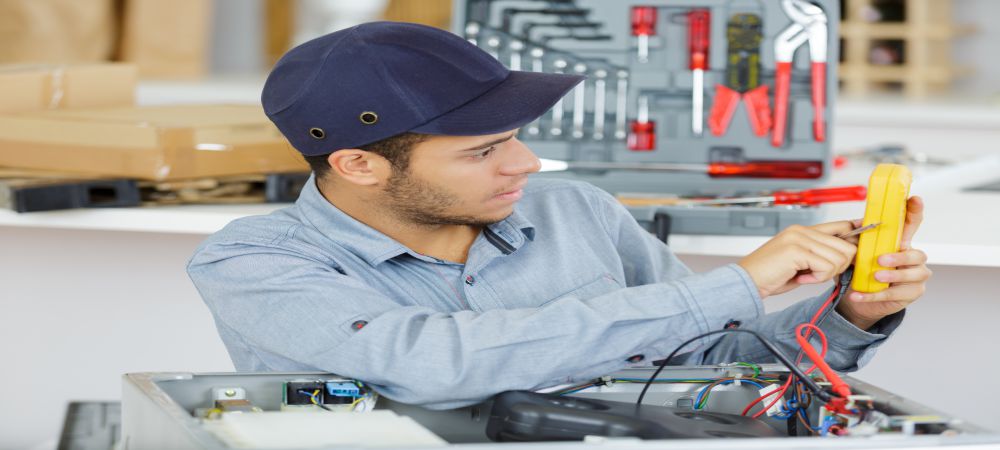There is no doubt that refrigerators make modern lives infinitely easier and more convenient. Thanks to this household appliance, there is no need to worry about food spoilage and the formation of harmful bacteria, ensuring that you and your family can always enjoy fresh food and beverages.
But on the other end of the spectrum, a malfunctioning refrigerator can turn your daily life upside down. For sure, nothing can be more frustrating than your fridge not turning on. Before seeking the services of a professional appliance repair technician, you may want to try troubleshooting the problem yourself first. This article will teach you how to do exactly that.
Reasons Why Your Fridge Won’t Turn On and What to do
There are several reasons why your refrigerator suddenly won’t switch on. Essentially, this error occurs when one or more of the components go kaput. The most common culprits are the cold control, overload relay, and electronic board.
In the case of the cold control and the overload relay, you will have to test them with a multimeter to confirm if either of them is responsible for your broken appliance. As for the electronic board, you will have to rely mainly on visual inspection, keeping an eye out for signs of damage. The malfunctioning fridge component will then have to be replaced with a new one.
Here are some tips to keep in mind before starting the troubleshooting process:
- Don’t forget to disconnect your refrigerator from the power source. The last thing you want is to hurt yourself or unwittingly start a fire.
- Always refer to the owner’s manual. It will include information about how to find, remove, and replace the refrigerator’s components. After all, the exact instructions will vary depending on the manufacturer, brand, and model. Plus, the manual may also have helpful pointers on what to do about refrigerators not turning on.
- Make sure that the multimeter is properly calibrated before use.
- Whenever in doubt, always call an appliance repair company or technician. After all, not everyone feels comfortable with handling household appliances.
Related article: How Much Does Repairing a Refrigerator Cost in Canada?
I. Broken Cold Control
The cold control – sometimes called “temperature control” – is a switch that regulates the temperature inside the fridge’s fresh food section. It comes with a sensor that monitors the air temperature, adjusting it accordingly by powering the compressor motor and the fan circuits.
If the air is too warm, for example, the cold control will send power to the compressor, ensuring that it is up and running until the temperature inside the compartment returns to the ideal level. If the compressor is constantly running or won’t even run, then the cold control may be defective.
How to Test the Cold Control Using a Multimeter
- Unplug your refrigerator from the power outlet.
- Open the fridge door and find the cold control. It is typically found at the back of the temperature control dial and inside the fresh food compartment’s control panel.
- Carefully remove the cold control from your refrigerator.
- Set the multimeter to the RX1 setting. Attach the probes to the terminals. You should get an infinity reading. If not, there is a lack of continuity.
- Slowly turn the dial to higher settings. This time, the screen should display a reading of zero, which indicates that the fridge’s cold control has continuity.
Failing any of the two tests means that the control is broken and will have to be replaced.
II. Malfunctioning Overload Relay
The overload relay – also referred to as the “overload protector” or “relay-start capacitor” – is a small safety device found in your refrigerator’s compressor circuit. Like several other fridge components, it is also meant to keep the air inside your appliance at optimal temperatures.
The overload device essentially receives and sends power to the compressor circuit until the fans are running smoothly. If the relay senses that the compressor is overheating, it will temporarily shut down the compressor, giving it some time to cool down. With that said, if the fans are functioning properly but the compressor won’t fire up, there might be something wrong with the overload protector.
How to Test the Overload Relay with a Multimeter
- As always, make sure that you have disconnected your fridge from the power source before getting started.
- Locate the overload device. Remove it from your appliance so you can test it. This device is usually attached to the side of the compressor.
- After detaching the capacitor, discharge it. Then, set the multimeter to the RX1 range and position the probes on the terminals. Refer to the owner’s manual for the ideal reading.
- If you get a reading that is outside of the manufacturer’s recommended range, your overload relay is probably defective and needs to be replaced.
If your refrigerator still malfunctions even after you have successfully replaced the capacitor, it is time to let a professional handle the problem.
III. Defective Electronic Board
The electronic control board can be considered as the brain of your refrigerator. That is, it controls the appliance’s important components such as the compressor, fans, and defrost system, among others. It also plays a crucial role in monitoring and regulating the temperature inside your refrigerator.
When the electronic board goes bad, your fridge may experience a wide range of problems. It may, for example, fail to turn on.
How to Inspect the Electronic Board
- You will be dealing with electrical parts. Hence, don’t forget to disconnect your unit from the power source.
- Open your fridge and locate the electronic board. It is often found inside your appliance’s control box. If you can’t locate it, refer to the owner’s manual.
- Examine the electronic board, watching out for any telltale signs of wear and tear, overheating, and burnt connections, among others.
- If you notice any of the above issues, you may need to replace the control board.
It is important to keep in mind that electronic control boards are quite complicated and expensive. Confirm that the compressor is not receiving any power supply and that the other controls are working before thinking about replacing your electronic board.
Related article: How to Repair Fridge Not Cooling Yourself If You Can
Restore Your Refrigerator to Working Order
A refrigerator that won’t start can be a huge setback in your day-to-day life. Thankfully, the problem is relatively simple to diagnose. If you are lucky, you may be able to troubleshoot the issue and replace the broken component – all without the help of a professional.
Unfortunately, the do-it-yourself route may not always work. Some issues are too complicated (or even dangerous) to diagnose and fix by yourself. In such cases, seeking the services of an expert is your best bet.
If you live in the Greater Toronto Area, you are in luck. Prime Appliance Repairs is a trusted appliance repair company that is more than capable of restoring your fridge to its former condition. Even better, we have one of the most affordable rates in GTA while promising top-quality service and a 6-month warranty for your peace of mind. Call us at 647-931-1114 to schedule an appointment today!









